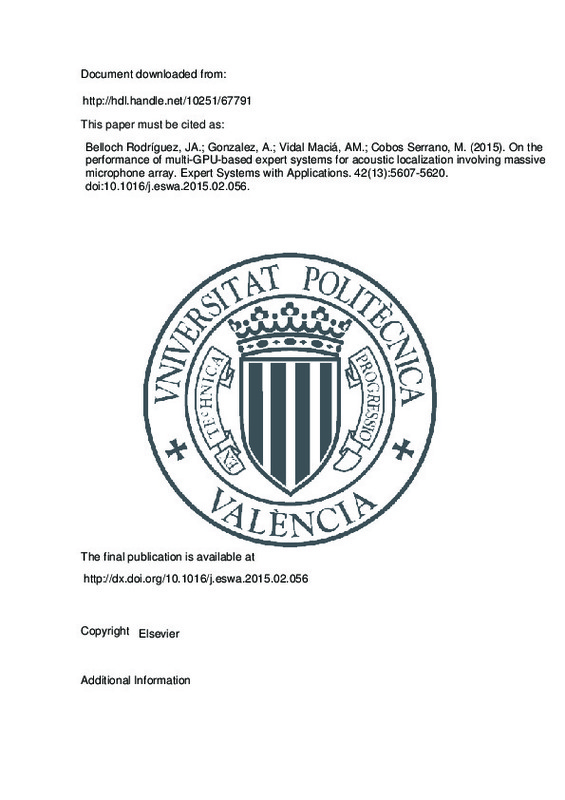JavaScript is disabled for your browser. Some features of this site may not work without it.
Buscar en RiuNet
Listar
Mi cuenta
Estadísticas
Ayuda RiuNet
Admin. UPV
On the performance of multi-GPU-based expert systems for acoustic localization involving massive microphone array
Mostrar el registro completo del ítem
Belloch Rodríguez, JA.; Gonzalez, A.; Vidal Maciá, AM.; Cobos Serrano, M. (2015). On the performance of multi-GPU-based expert systems for acoustic localization involving massive microphone array. Expert Systems with Applications. 42(13):5607-5620. https://doi.org/10.1016/j.eswa.2015.02.056
Por favor, use este identificador para citar o enlazar este ítem: http://hdl.handle.net/10251/67791
Ficheros en el ítem
Metadatos del ítem
| Título: | On the performance of multi-GPU-based expert systems for acoustic localization involving massive microphone array | |
| Autor: | Belloch Rodríguez, José Antonio Cobos Serrano, Máximo | |
| Entidad UPV: |
|
|
| Fecha difusión: |
|
|
| Resumen: |
Sound source localization is an important topic in expert systems involving microphone arrays, such as automatic camera steering systems, human-machine interaction, video gaming or audio surveillance. The Steered Response ...[+]
|
|
| Palabras clave: |
|
|
| Derechos de uso: | Reserva de todos los derechos | |
| Fuente: |
|
|
| DOI: |
|
|
| Editorial: |
|
|
| Versión del editor: | http://dx.doi.org/10.1016/j.eswa.2015.02.056 | |
| Código del Proyecto: |
|
|
| Agradecimientos: |
This work has been partially funded by the Spanish Ministerio de Economia y Competitividad (TEC2009-13741, TEC2012-38142-C04-01, and TEC2012-37945-C02-02), Generalitat Valenciana PROMETEO 2009/2013, and Universitat Politecnica ...[+]
|
|
| Tipo: |
|







![[Cerrado]](/themes/UPV/images/candado.png)


